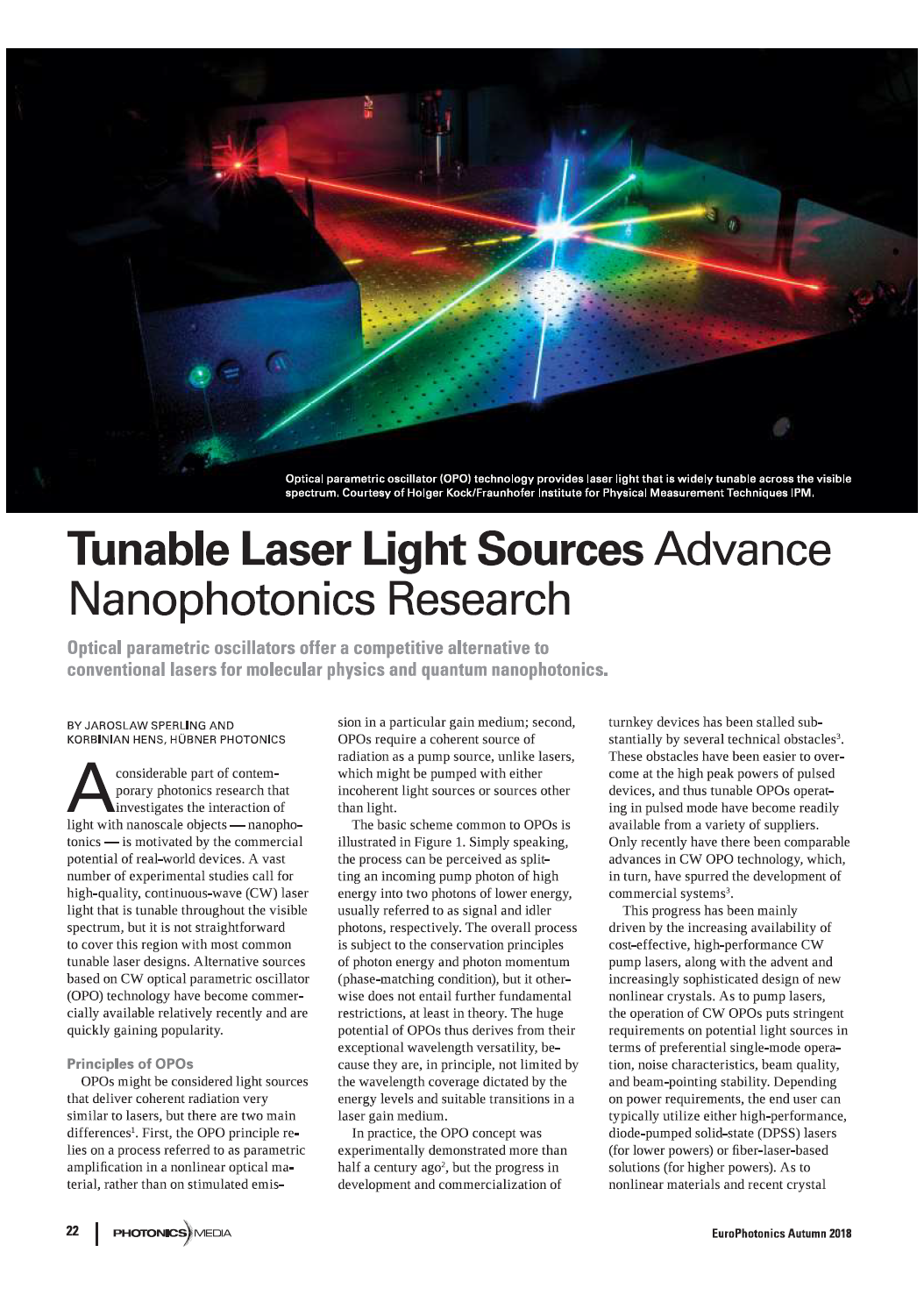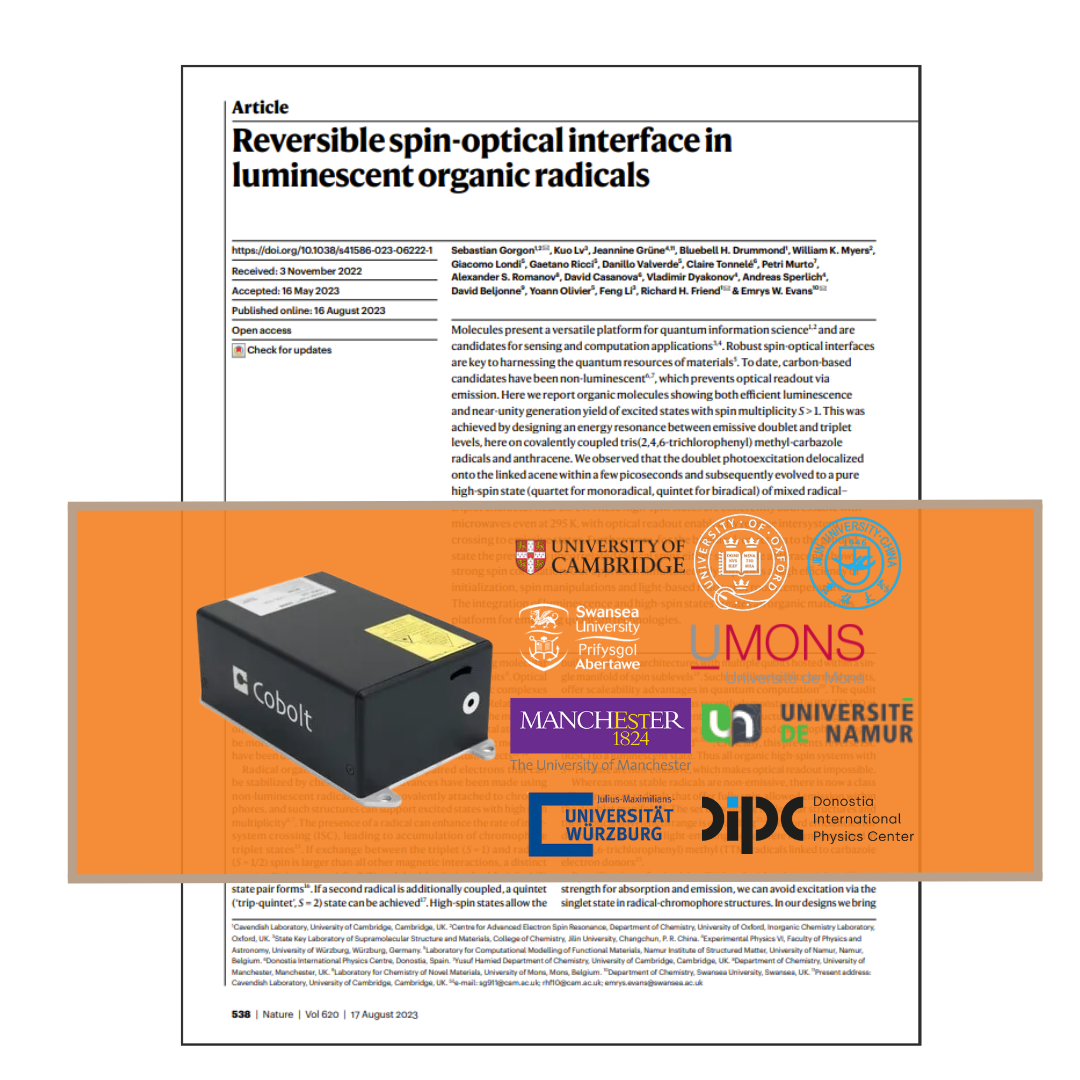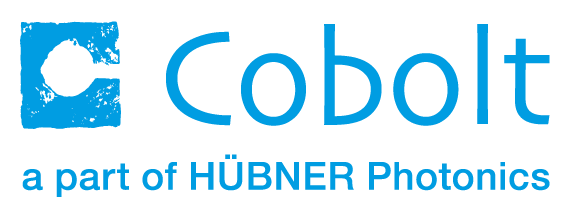3 March, 2021
State-of-the-art OPO technology delivers continuous-wave tunable laser light for an increasing variety of applications
Motivated not least by the commercial potential of envisioned real-world devices, a considerable part of contemporary photonics research – commonly subsumed by the term nanophotonics – investigates the interaction of light with nanoscale objects. A vast number of experimental studies in that context call for high-quality continuous-wave (cw) laser light that is tunable throughout the visible spectral range, a region which is not straight forward to cover seamlessly with most of the common tunable laser designs. Alternative sources based on cw optical parametric oscillator (OPO) technology have become commercially available relatively recently only – and are gaining popularity remarkably quickly.
Practical design and performance
While OPO technology appears to be ideally suited for generating tunable cw laser light across arbitrary wavelength ranges, one must keep in mind that the OPO process itself will always generate output at wavelengths that are longer than those used for pumping. Consequently, OPO devices operating across the visible spectral range do either require UV pump sources, or, alternatively, need to employ additional frequency conversion stages. As of today, only the latter approach has been proven to be technically practicable and operationally stable in commercial turn-key systems.
Tunable OPOs at work
Not surprisingly, the sweet spots for implementing cw OPO technology are experimental settings that require narrow linewidths and that significantly benefit from the accessibility of a wide tuning range at the same time, but which are not too demanding in terms of output powers. Several of such application highlights are presented in the following in an exemplary manner. Notably, the particular systems under study are to be clearly distinguished in terms of the underlying physical phenomena that determine their spectroscopic signatures – in a broader perspective, however, all of the experiments are sensitive probes of nanoscale factors governing the light-matter interaction.
Their performance characteristics make tunable cw OPOs competitive alternatives to conventional lasers and related technologies for the generation of widely tunable cw radiation in the visible spectral range – which particularly applies for a variety of experimental studies in the realm of molecular physics and quantum nanophotonics, as illustrated by the examples presented here. It appears fair to say that further new applications are predictable: May it be in the form of refining and extending the experiments presented here to new samples, like photoluminescence studies of novel single photon emitters, or in the form of increasingly sophisticated experimental approaches, like state-of-the-art methodologies in Raman scattering of single molecules.
Read our recent article in EuroPhotonics 2018 Tunable Laser Light Sources Advance Nanophotonics Research
More resources
Explore our Publications for practical insights on how our customers are leveraging the power of our lasers in their projects.
Customer publications
Product line: Cobolt
Application: Quantum
Wavelength: 532 nm
New Discovery in Quantum Technology: Shining Light on Organic Molecules
scientists have developed organic molecules that can glow brightly and be used in advanced quantum technologies
Customer publications
Product line: Cobolt
Application: Quantum
Wavelength: 594 nm
Nanographene Research Unveils Highly Soluble Quantum Dots
Researchers have unveiled a new family of nanographene materials with the help of the Cobolt Mambo 594 nm laser.
Customer publications
Product line: Cobolt
Application: Fluorescence microscopy
Wavelength: 488 nm
New Breakthrough in Cellular Imaging with the Cobolt 06-MLD Laser
Scientists at the KTH Royal Institute of Technology in Sweden, and Calico Life Sciences, have made significant strides in cellular imaging.







